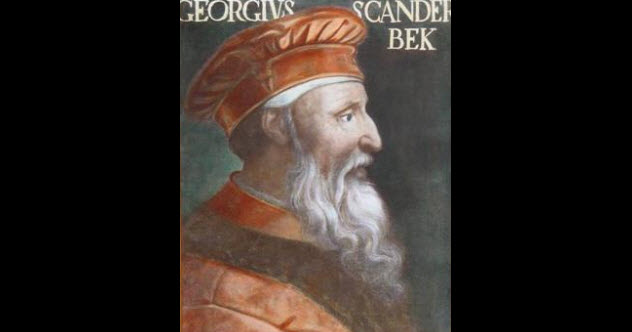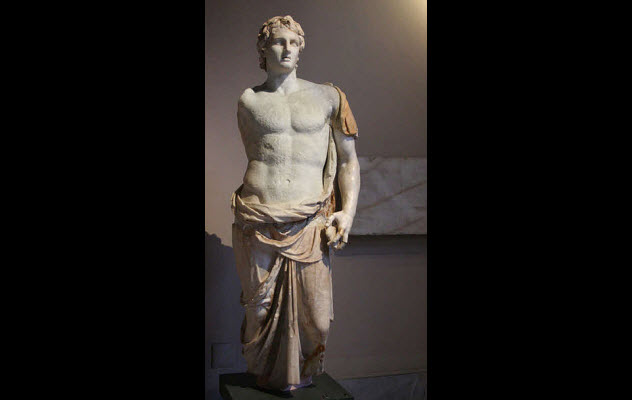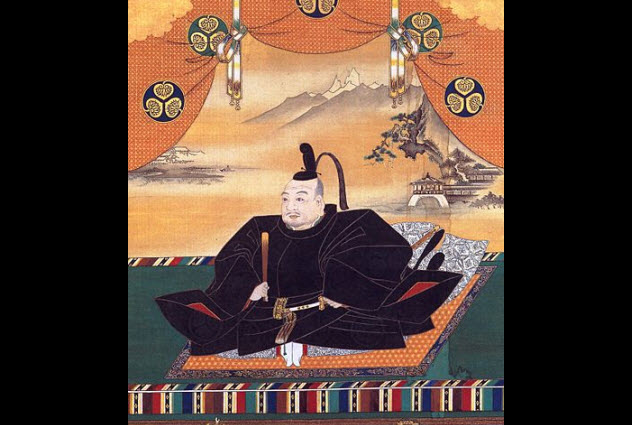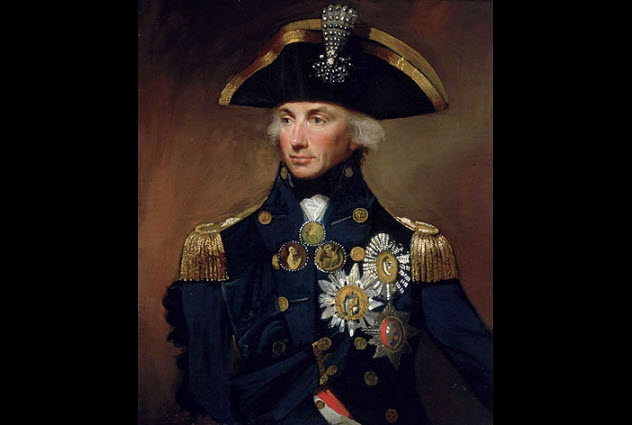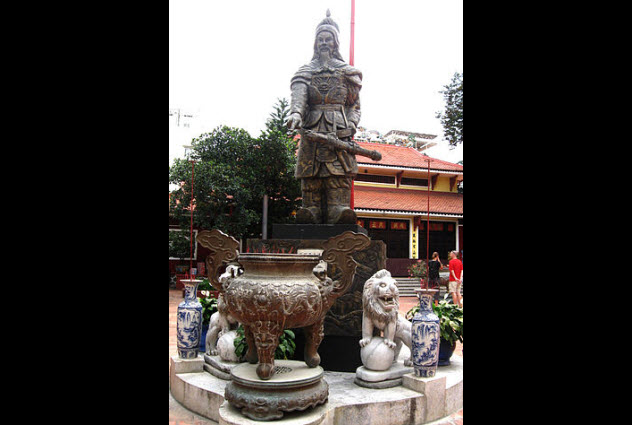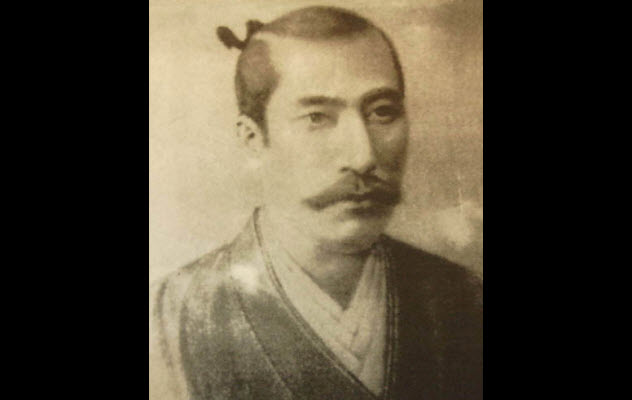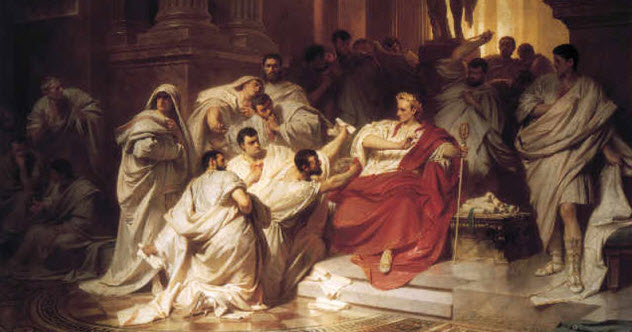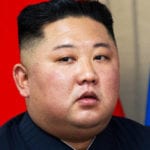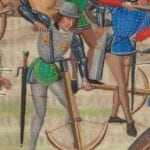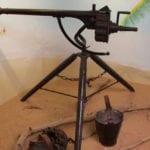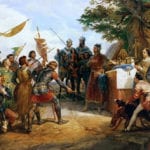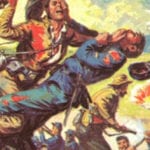10 Skanderbeg
Gjergj Kastrioti, more commonly known as Skanderbeg, was a former Ottoman military leader who defected to lead an Albanian rebellion against the Turks. He was a general of incredible stature, with an army of around 15,000 at its height. For 25 years, he successfully carried out a guerrilla war against the Ottomans, using the mountainous terrain to his advantage and constantly harassing the Ottomans and targeting their supply lines. Skanderbeg’s innovative tactics were displayed during the Battle of Ujebardha in 1457. The Ottomans invaded with about 90,000 men against Skanderbeg’s force of fewer than 20,000. Understanding the danger that the Ottoman army posed, Skanderbeg had his army split into several forces, disperse into the mountains, and keep out of sight. After five months in the mountains, the Ottoman leadership had become frustrated and believed Skanderbeg had given up. Once they relaxed their defenses, he launched a shock attack on the Ottoman camp in which an estimated 30,000 Ottomans died or were captured.
9 Alexander The Great
Alexander the Great conquered the known world during his time, and if it weren’t for his army revolting and having him turn back, he could have conquered even more. By the time of his death, his empire spread from Greece to India, with the majority of his battles won by facing larger armies. The best example of Alexander’s innovative ability occurred during the siege of Tyre in 332 BC. A small island city in what is now Lebanon, Tyre had walls surrounding it as far as the sea. This made the city a nightmare to capture, so Alexander devised an innovative plan to seize it. He built a 1-kilometer (0.6 mi) causeway (which still exists) to the island city, allowing him to use his troops in the siege. He also built two 50-meter (160 ft) siege towers that let his catapults shoot at the walls from a protected position. Then his navy blockaded the city. When Alexander eventually conquered Tyre, he slaughtered and sold into slavery most of the population. Nevertheless, his ingenuity in conquering the city was brilliant, especially considering the difficulty of the invasion.
8 Tokugawa Ieyasu
Tokugawa Ieyasu was the man who finished Oda Nobunaga’s work and unified Japan. His government was known as the Tokugawa shogunate, which lasted over 250 years. During Nobunaga’s wars to try to conquer Japan, the two warriors’ armies fought together as allies until Nobunaga’s death. The Battle of Mikatagahara in 1573 demonstrated Ieyasu’s ability to make drastic and risky decisions. When Ieyasu and his 14,000 men faced off against Takeda Shingen and his 27,000 soldiers, Ieyasu’s army was crushed. Only five men accompanied him back to Hamamatsu Castle. With the town panicking at the news of the defeat and the enemy’s cavalry approaching, Ieyasu made a brilliant decision. He left the castle’s defenses open, with the braziers lit and war drums playing to give the impression of a larger army and an orderly retreat. Shingen’s force assumed that this was a trap and didn’t dare to attack, instead making camp for the night. While they slept, a small group of Ieyasu’s ninjas attacked the camp, causing chaos that made Shingen’s men uncertain of how many men Ieyasu had left. Combined with the fear that Nobunaga was on his way with a relief army, this led Shingen to retreat to his fortress.
7 Subutai
One of Genghis Khan’s “dogs of war,” Subutai is among the most revered Mongol generals of all time. He’s best known for his raids into Europe where he fought the Hungarians, Russians, Poles, and others. He almost always faced bigger armies and won by using incredible mobility and brilliant strategy. If it wasn’t for the untimely death of Ogedei Khan, Genghis Khan’s son and successor, Europe would have been unable to stop Subutai’s army. In his initial “cavalry raid” into Europe, Subutai fought the Battle of the Kalka River. With 20,000 men, he scouted out and fought around Eastern Europe. His forces came up against a coalition of about 80,000 men under the Kievan Rus. Subutai realized that he couldn’t beat the opposing army, which was attempting to surround him, so he used a favorite tactic of the Mongols, the “feigned flight.” This is where the army pretends to have been routed and runs away. The Mongols had parts of their army in place specifically for putting on this type of convincing show. The enemy fell for this ruse and gave chase to the Mongols all the way to the Kalka River, where Subutai was waiting for them in battle formation. Using their mobility and a favorable battleground that better suited their horses, the Mongols crushed the enemy army with casualties believed to be over 70,000 men. Then the Mongols erected a platform, putting the captured men inside to be crushed or suffocated to death while the Mongols celebrated their victory with a feast above.
6 Horatio Nelson
English admiral and national hero Horatio Nelson is one of the finest naval commanders in history. His campaigns against the French and the Spanish meant that neither nation would become a threat to Great Britain’s naval dominance, which dashed any hope that Napoleon had of invading Britain as well. The Battle of Trafalgar is the best example of Nelson’s innovative tactics. The French and Spanish ships were on the move when he approached for battle. Although Nelson was outnumbered, 33 ships to 41, he had a strategy to win. Generally, naval encounters were fought by lining up the opposing ships’ weaponry to face each other and then firing before close combat ensued. But Nelson believed that earlier close combat would have a better impact, especially with Britain’s higher caliber of guns and seamen. With this in mind, he arranged his fleet into two distinct columns and attacked the Franco-Spanish line. This split the opposition fleet into three sections, crucially isolating the flagship and disabling it. Without any real leadership while being attacked and boarded by the British, the French and Spanish ships quickly fled. They suffered huge casualties, with 21 ships captured and one sunk. No British vessels were lost, but unfortunately, Nelson died from a gunshot wound during the battle.
5 Scipio Africanus
Scipio Africanus was a brilliant Roman general who turned the Second Punic War in favor of the Romans, wrestling the victory from Hannibal. Scipio saw Hannibal’s brilliance firsthand in battles such as the disastrous Cannae. Learning from this, Scipio based his strategy for war on Hannibal-style engagements, even performing a move that became known as the “reverse Cannae” at the Battle of Ilipa. The “reverse Cannae” was a technique in which Scipio surrounded the Carthaginians by having his cavalry advance faster than the rest of the army, the exact opposite of Hannibal’s maneuver at Cannae. He used clever nuances such as attacking the Carthaginians at Ilipa early in the day, denying them a full night’s rest and nourishment at breakfast. He also developed methods of dealing with the Carthaginian elephants that had terrorized the Roman lines early in the war. At the Battle of Zama, he had his men ready to separate and form lanes. The elephants ran down those lanes when they charged, and their lack of mobility at a high speed prevented them from turning in to the Romans. Scipio pulled off another innovative maneuver when he invaded Africa. He found the Carthaginian camp and had his men light fires at several points in the camp as the enemy slept. When the terrified and shocked Carthaginians ran out of the burning camp, the Roman soldiers were waiting. An estimated 40,000 enemy soldiers died in this encounter.
4 Tran Hung Dao
A general for the state of Dai Viet (which is now Vietnam), Tran Hung Dao achieved one of the most incredible military feats of all time in fighting off three successive Mongol invasions. Taking advantage of the enemy’s lack of knowledge of the area, he used tactical retreats to fight a war of attrition against the Mongol army. When the Mongols attacked Dai Viet, Tran led his army southward and let harsh tropical diseases take their toll on the Mongolian army. Then he waited to counterattack until the enemy’s morale was low and they were situated in an area where their formidable cavalry had lost its strategic advantage. One of his most innovative tactics was used against the Mongol navy at the Battle of Bach Dang River. He had steel-tipped wooden stakes planted in the riverbed at specific points before luring the Mongol fleet into the river with some of his own ships. Once in the river, the Mongol fleet was impaled on the stakes and ambushed by other booby traps. Then Tran burned the entire Mongol fleet of about 400 vessels. Without the fleet to bring food to the Mongol army, they were forced to retreat to China.
3 Oda Nobunaga
Japanese samurai Oda Nobunaga was a 16th-century military leader who set in motion the unification of Japan by conquering one-third of the country before his death. Although he was a brutal ruler, his military record was exceptional. In fact, he was well on his way to unifying Japan before his untimely death. In 1560, Oda Nobunaga displayed his ingenuity and military skill during the Battle of Okehazama where he beat a much larger army by tricking them. Led by Imagawa Yoshimoto, the enemy had an army numbering 35,000 men. Nobunaga had only 2,500 men. Yoshimoto’s army was camped near a fortress held by Nobunaga but didn’t realize how small his army was. To prevent an immediate attack, Nobunaga left a few men at the fortress to erect war flags and banners, making it look like he had a much bigger army. Then Nobunaga led the rest of his army around the back of the enemy camp. Yoshimoto’s men were celebrating their recent victories, and there was a thunderstorm raging above, which Nobunaga’s men used to mask their arrival. Once the attack started, it was a bloodbath. The drunken, confused opposition was slaughtered, with most fleeing the camp. Even Yoshimoto died, beheaded while trying to fend off samurai.
2 Julius Caesar
Julius Caesar boasts a military record that is nothing short of extraordinary. His brilliant mind conceived some of the most ingenious methods of outwitting and defeating his opponents, such as the bridge over the Rhine River that was built by his legionaries. This strategic bridge is considered to be a “masterpiece of military engineering” and allowed his army to have invaluable mobility against this natural obstacle. The Battle of Alesia may illustrate Caesar’s military genius best. Caesar was besieging a strong hilltop fort because a direct attack on the Gallic forces would have been useless. He knew that the fort’s food supply wouldn’t last long with 80,000 inhabitants. To create a perfect blockade, Caesar build a set of walls around the fort to stop anyone from entering or leaving, which is a technique called circumvallation. Just as Caesar’s legionaries were putting the final touches on the fortifications, a small number of men from the Gallic cavalry escaped. Caesar knew that a relief army was sure to arrive, so he decided to build a second set of fortifications around his army. This brilliant move meant that he could continue to besiege the fort while defending his army from the impending relief army attacking from behind. Unfortunately for the Romans, the relief army broke through a weak spot in the fortifications and attacked Caesar’s army. The legionaries were struggling because they were vastly outnumbered. Then the Gallic army inside the fort attacked at the same time. Caesar took a small cavalry detachment of around 6,000 men and attacked the rear of the huge relief army. Fearing that a second army had arrived, the panicked Gauls broke and fled. Vercingetorix, the Gallic leader, surrendered the fort and himself. This brilliant move secured northern Italy, France, Belgium, and most of the Netherlands for the Romans.
1 Hannibal
There are many examples of Hannibal’s innovative brilliance. At the Battle of Cannae, he used his shrewd tactics to obliterate a Roman army that had far more soldiers. Then there’s the Battle of Ager Falernus where he ordered his men to tie torches to the horns of oxen, which confused the Roman army when the animals fled in fear. But his most brilliant strategy occurred when he crossed the Alps, a move so audacious and risky that it transformed Hannibal into a kind of bogeyman for the Romans. Knowing that the Carthaginians had an alliance with the Gauls in the Po Valley region of northern Italy, the Romans launched a preemptive attack on the Gauls to annex them. This gave the Romans a false sense of security, thinking that they could easily prevent a Carthaginian invasion. However, Hannibal chose the one option that the Romans never expected. He landed his army in Spain and began to move up the coast before reaching the Alps. Then he crossed the mountains and landed in northern Italy to the shock and terror of the Romans. By constantly outmaneuvering and tricking the Roman generals with his genius, Hannibal won several battles in succession, including the Battle of the Trebia, the Battle of Lake Trasimene, and the Battle of Cannae. I like history, so I write about it.
